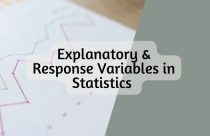Data Sharing: Why Researchers Need to Share Data With Other Laboratories

In today’s digital age, information storage and data sharing have become a normal part of our lives. We exchange e-mails and messages with friends and colleagues daily irrespective of where they are located. Of course, we expect this to be true for our professional environment as well. This wish to share research data and scientific results with others is the reason why Open Access has become so successful.
Cloud Sharing & Preprints
One of the first steps taken by researchers towards sharing their results with their peers was offering downloadable content on their homepages from cloud-based servers. Now, the use of preprint platforms, such as F1000 Research or ArXiv, can be added to this list. These services offer many advantages because they allow the fast dissemination of research. This may also lead to open discussions that help scholars improve their work before being officially submitted to a journal.
Be Open, Please!
Many funding agencies and institutions now require the results of scientific studies to be shared with the public as a condition for providing grants or awards. The NIH, for example, has created policies that require data sharing, and any results generated by studies with direct costs above $500,000 per year must be made open access.
Even publishers are now asking authors to deposit some datasets in public platforms. This is to make them available for later access and use by other researchers. These actions promote open discussions that can maximize research productivity.
Although data sharing offers many benefits, there are also several risks associated with it. Researchers must, therefore, be careful with their data-sharing practices. Knowing and understanding the different types of data-sharing licenses can be of great help.
The Transformative Power of Data Sharing
In an article posted recently to BioRxiv, a group of researchers discusses the impact of data sharing on science. The team used the International Neuroimaging Data-sharing Initiative to study how open sharing impacts data use and the resulting publications. They studied a seven-year period (from 2010 to 2017) and found that scientific results obtained using shared data that cannot be published in high-impact journals is not true. They also reported a growth in this type of publications and demonstrated that openly shared data can help academics to accelerate science, increasing the scale of scientific studies and enabling the involvement of scientists from different geographical areas and a broader range of disciplines.
“These findings suggest the transformative power of data sharing for accelerating science,” the researchers say. Although the article is still a preprint and not yet peer-reviewed, the benefits of data sharing are obvious. Moreover, every day, more scientists are willing to make their results available to the public.
TOP Guidelines
In response to this data sharing trend—and because of the different needs and practices throughout the research community—many publishers are now introducing new data guidelines for their journals. It is good to see that major publishing organizations, such as AAAS, Springer Nature, Wiley, the Royal Society, and now Elsevier are working to improve the quality of research by becoming signatories to the Transparency and Openness Promotion (TOP) Guidelines.
Do you share your research data? How do you go about sharing your research data? Share your thoughts with us in the comments below!









